A Tour of the Museum
|

The late David
Plant, standing by the shop door. |
On arrival at the museum, the first room entered
is the Museum Shop. This used to be the fancy drapers and
general stores, that was run by Edith and Flora Hodson. The shop
is much as it used to be and still has the same counter. On
display are many of the items from Edith and Flora's shop. The
same bell still rings when you open the door. On leaving the
shop you enter the Parlour. |
| Some of the items on display
that were from Edith and Flora's Shop. |
 |
 |
The fireplace and the
display about the shop. On the floor is an old hand-made rug. |
 |
The parlour is an accurate reconstruction of an
early twentieth century sitting room. The furniture, pictures,
books and ornaments belonged to the Hodson family. John and
Sarah Hodson ordered many of the items, including furniture,
from Graves of Sheffield, who were a large mail order company.
The room still has its gas lighting and an open fire, and
retains its original warm family atmosphere. When you leave the
parlour, you climb the stairs to the Upstairs Display Room. |
|
Another corner of the
parlour |
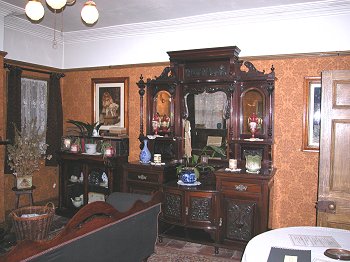 |
| The Upstairs Display Room
|
|
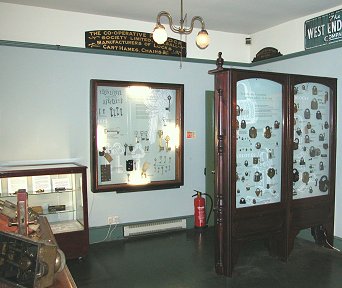
A corner of the Upstairs Display Room |
Two of the original bedrooms have been joined to
make the Upstairs Display Room. It contains a collection of locks
from about 1750 to the present day and includes a copy of an
Egyptian lock from 2000BC. |
| There are Dreadnought padlocks, in which the key was
applied to the surface rather than inserted into the lock, French
keys, detector locks and gas-proof locks. Over the fireplace is a
fine display of lockmaker's plates and nearby is a display showing
some of the many specialist locks that were made in the town.
One of the displays showing some of the
many interesting locks that are in the collection.
|
 |
 |
Another corner of the room
showing some of the display cabinets, the interesting lockmaker's
plates and one of the safes. |
| One of the exhibits shows the
inside of a lock. |
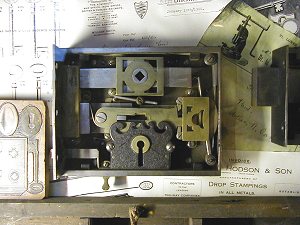 |
 |
The Dreadnought Padlock which
was patented
by G.G. Potter in 1895. |
| On leaving the display room you enter the bedroom. |
| The bedroom, is as it must have been in the early
1900's. The furniture, linen and linen chest were Hodson family
possessions. The bed which was ordered from the Graves catalogue, in
about 1900, is known as 'Parisienne' in style. After leaving the
bedroom you enter the office. |
 |
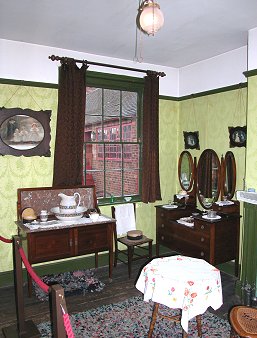 |
Another corner of the bedroom. |
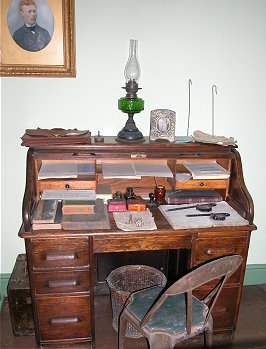 |
This was originally Hodson's office,
which has now been recreated in the room. The furniture includes
Hodson's old roll-top desk, complete with order books, letterheads
and correspondence from customers. |
| Another of the displays in the
office. |
 |
| You leave the office by the winding staircase, and
go down to the kitchen.
The Kitchen
|
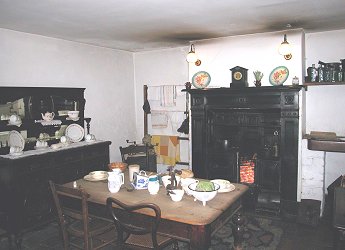 |
The kitchen includes a black-leaded kitchen range
and a scrubbed wooden table. It was laid out just as it would have
been in about 1900. It is evocative of the time when the fire was
always lit and the kettle was on the boil. |
| Another view
of the kitchen |
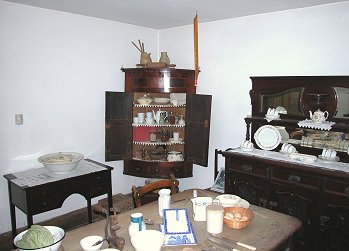 |
|
After leaving the kitchen, you go into the yard and into the first
door on the left, to enter the Varnish Shop and the family's
wash house.
The Varnish Shop
|
 |
The varnish shop is where the locks were varnished
to prevent rust. The process, which provided an attractive
finish was known as japanning. The family also used this room as
a wash house and on display is a mangle, wash tubs, dolly maid
and a posher. |
Next door is the Jack Taylor Education Room, which
used to be the stamping shop. Across the yard on the right is the
Two Storey Workshop.
|

The yard showing the varnish shop and the
Jack Taylor Education Room. |
| The two storey workshop. |
 |
|

The late David Plant at the forge. |
This is where the locks were made. The ground floor
contains the smithy, presses and the machinery to produce the lock
parts. The first floor contains the assembly shop, where the locks
were assembled. After leaving the workshop you walk across the yard
and leave the museum via the parlour and shop. |
|
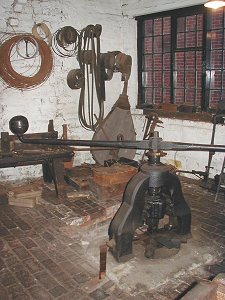
The large hand press in the lower workshop. |
|

The powered press. |
|
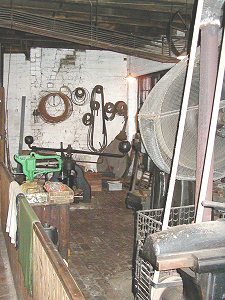
The lower workshop showing the large hand
press and scales. |
|
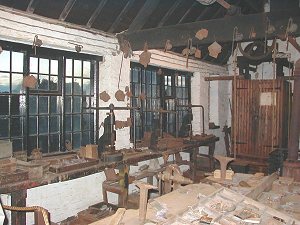
Hand presses in the upper workshop. |
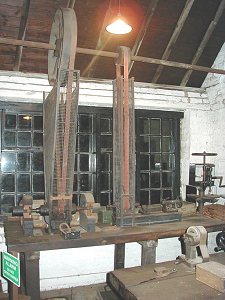
Overhead line shafting in the upper
workshop. |
|
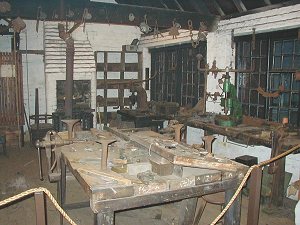
A general view of the upper workshop. |
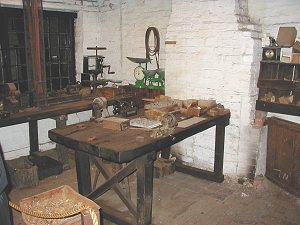 |
One of the assembly areas in
the upper workshop. |
| Some of the volunteers
standing outside the Museum. On the extreme right is Tom Millington
and next left is Andy Millington. Photo courtesy of Norma Taylor. |
 |

|
|
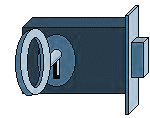
|
|
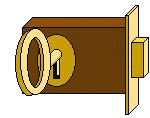
|
|
Return to the
history
of the lock museum |
|
Return to the
beginning |
|
Proceed to
location |
|